
Dinkelsbühl
Did a day trip to the very beautiful and lively old part of Dinkelsbühl. Thankfully the weather was nice, so it wasn’t too hard to get some nice pictures.
These are the topics in this travel
- Where is Dinkelsbühl
- The history of the city
- Dinkelsbühl today
- The city gates
- St. Georg Minster
- The city
- Night time
- Summer Breeze
Location
Dinkelsbühl is located in the county of Ansbach in Mittelfranken, Bavaria. It lies South or Würzburg, North of Augsburg/Ulm, East of Stuttgart, West of Nürnberg and belongs today to the metropolitan area of Nürnberg.

The History of the City

As the trading became more important, the Franconia royals build a settlement area in the Wörnitzfurt to secure the trading routes.
In 1188 Friedrich Barbarossa hands over the burger tinkelspuhel to his son Konrad von Rothenburg.
In 1274 the city is granted the status of an imperial city, meaning that the city were not subject to a prince, but to the emperor.
With the reformation in 1522, the majority of the citizens converted to Protestant.
After the emperor Karl V. defeated the Schmalkaldischen Bund (protestants) in 1546, the St. Georg Minster was granted to the catholic party in 1552.
During the Thirty Years’ War (1618-1648), Dinkelsbühl swinged eight time between the Catholic-Imperial and Protestant-Swedish. Although financialy hit very bad, the city is not destroyed.
In 1806 Dinkelsbühl is affiliated to Bavaria and in 1826 King Ludwig I. rules that there is no dismantling of the city which helped to preserve the old part of the city. Also both world wars spared out Dinkelsbühl from destruction.
Dinkelsbühl Today
Since 1998 Dinkelsbühl is a the major county town (Große Kreisstadt) for 67 towns in the district.
As many cities, also Dinkelsbühl has evolved and grown. Yet the old part of the city has somehow been preserved respectively renovated in such a way that it kept its charm and beauty of the old days.

The Gates
If travelling by car, it is best to park outside of the old town and walk through one of the four gates into town.

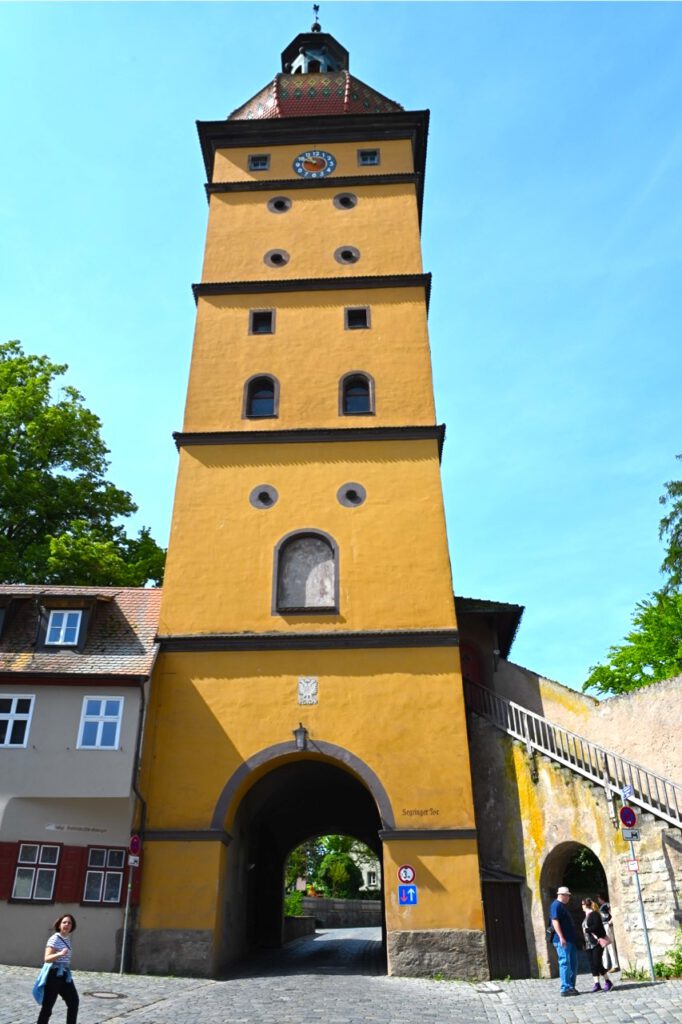

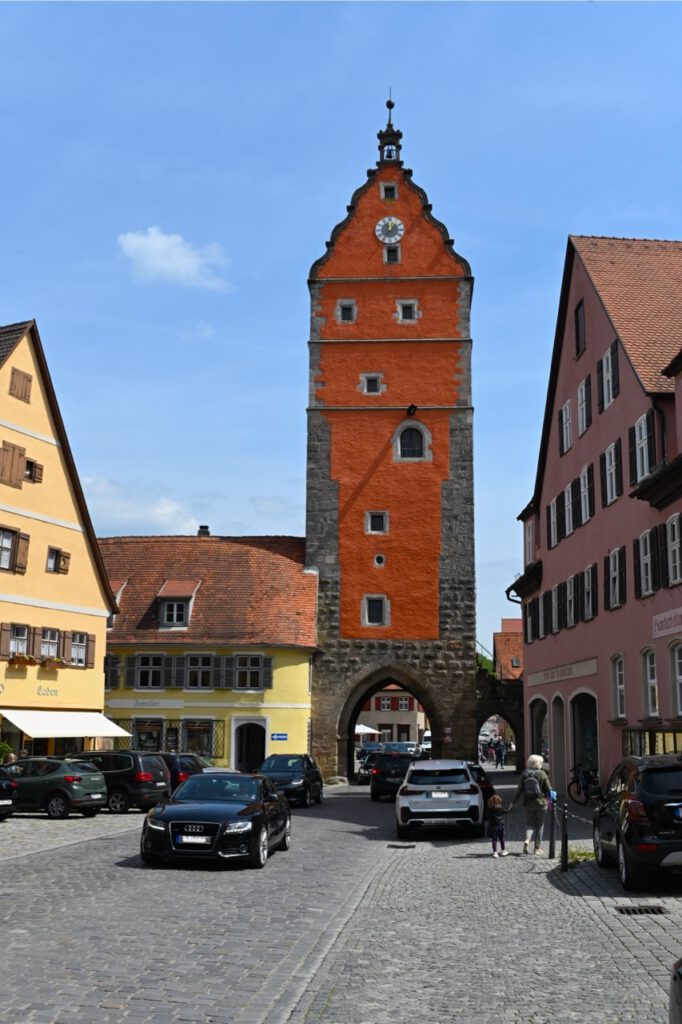
From all four gates, the streets directly lead to the city center where the streets Weinmarkt-Nördlinger Str- and Segringer Str. meet at the market and St. Georg Minster.
From the Marktplatz, in front of the Minster, three of the four main roads meet. Pictures show the view from the market place / junction down the main road leading to the gates.


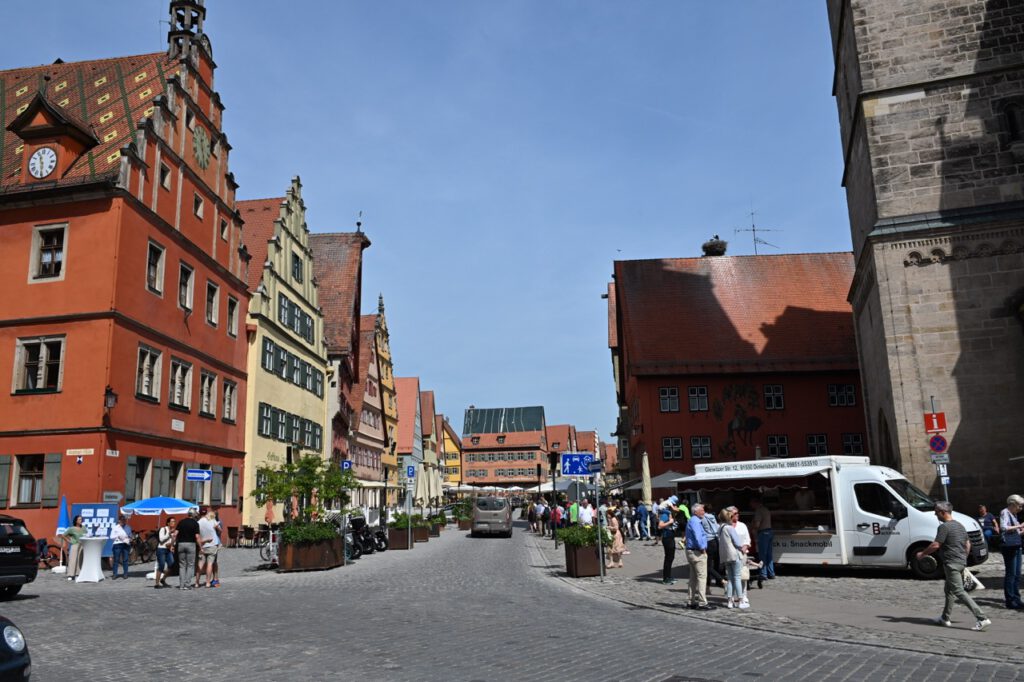

Roughly 100m down Nördlinger Str. is a junction to the Street Ledermarkt which Leeds to the fourth gate Wörnitztor.
Here the view from the gate in direction of the Minster.
St Georg Minster
The St Georg Minster is at the heart of the city. It was built as a late Gothic hall church from 1448 to 1499 on the foundation of a former church dated back to the 12th century.


In 1469 the west side was completed and documented with two pictures from (unknown) Saints in the upper part of the facade.





The inside of St. Georg Minster is what you would expect from a Catholic Church – impressive!







Little sad / odd story from this century about the relic of Matyr Aurelius.

Aurelius was a Roman soldier and a believer. That is why Emperor Nero had him beheaded as an alleged arsonist in the Colosseum after the burning of Rome in 64 AD. As a Matyr, he was buried in the catacombs of Rome.
Aurelius’ remains were donated to the cathedral when the foundation stone was laid. Now the sad part. He laid there for over 300 years until on March 22, 2010, unknown persons smashed the glas from the shrine and stole his left leg.
The City
When you search the internet about Dinkelsbühl, you will find superlative quotes like the most romantic city in Germany, the most pretty city in Germany, the best preserved medieval city in Germany. And yes, yes, yes! Dinkelsbühl was not demolished and preserved its asset and has done a good job.
There are no flashy signs, no irritating advertisement, but Street names and Shop names in Fraktur letters.

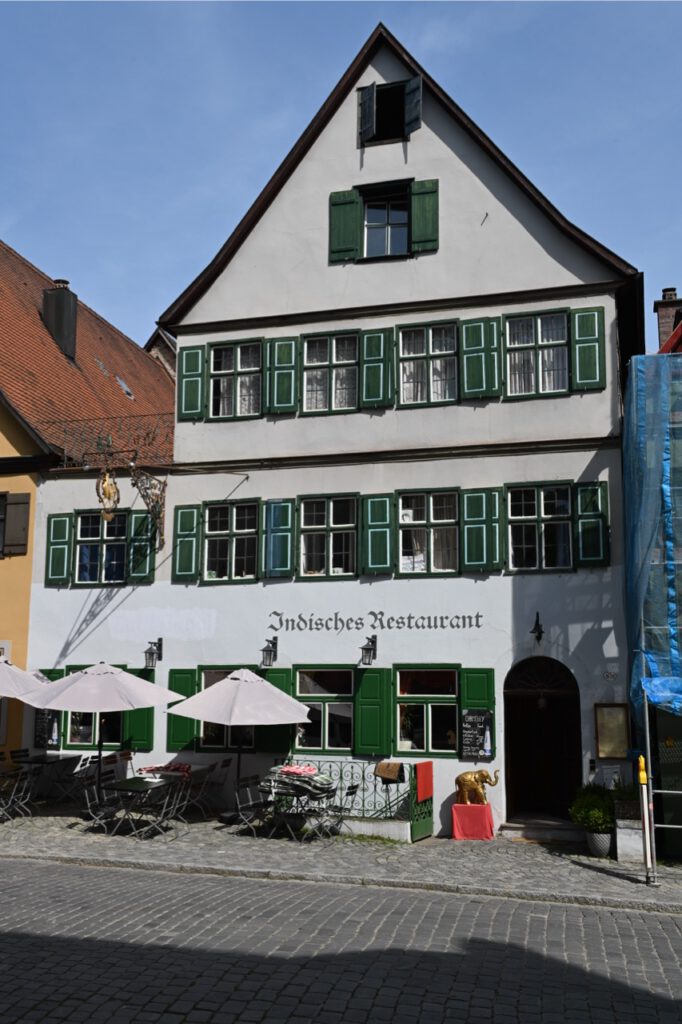






Random impressions from Dinkelsbühl, showing that the concept of preserving the old has been applied in every street, at every house.

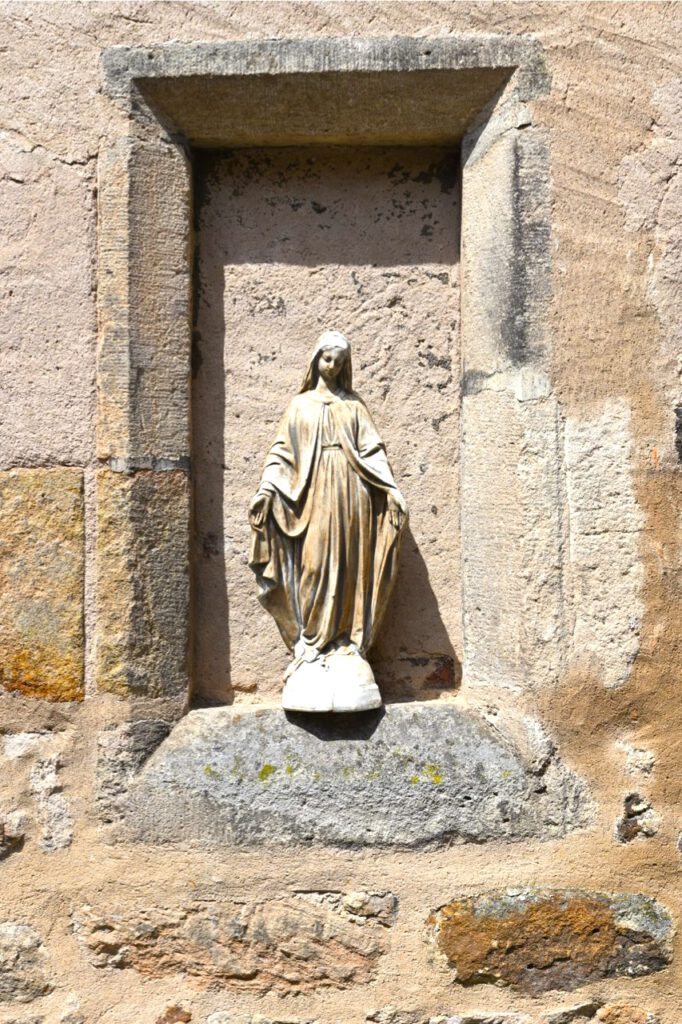



On Weinmarkt Street are on both sides of the streets hotels and restaurants. I can recommend the restaurant Sonne. Great food, nice service, pleasant seating and the have coincidentally my favourite Beer Augustiner Edelstoff. The Schrannenfestsall (something like a music hall) had some Jazz gig the night before.



Just another example of a beautiful house having the story of Maria, Joseph and Jesus presumengly on their journey to Bethlehem.

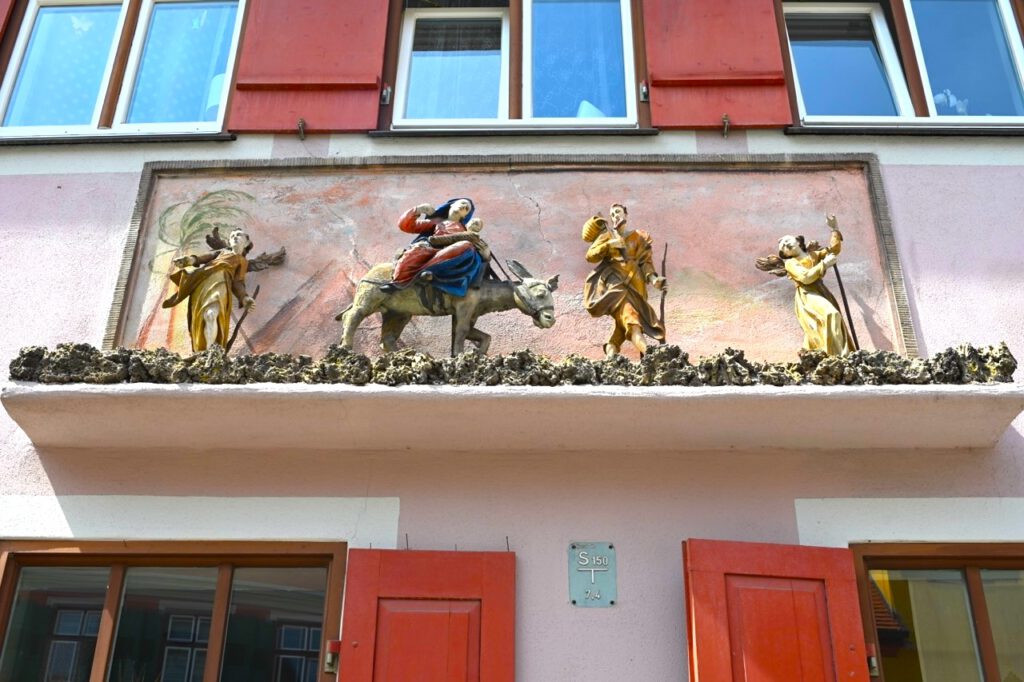
Night Time
It’s calm during night time.



Summer Breeze
In contrast to the calm a rather quiet city life, Dinkelsbühl offers once a year a contrast event.
If you’re into Metal music then you might want to try out the Summer Breeze in Dinkelsbühl. The festival started first 1997 and since 2006 it is in Dinkelsbühl. Maybe even first go to Wacken from 31. July until 03. August and then from 14. til 17. August to the Summer Breeze.
add ons
Found this nice link on the web page from Dinkelsbühl – Nice 360 degree bird eye view of Dinkelsbühl
That’s all.
Thanks for reading.
Hope you enjoyed it.
Peace-Love-Beer